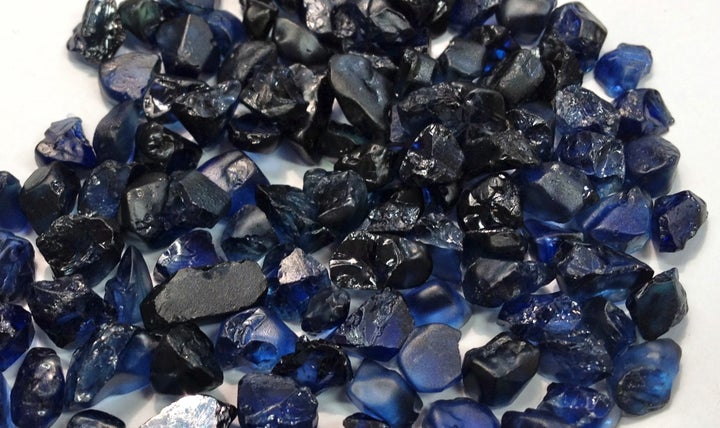
Ever since Prince William slipped Lady Di’s ring on Kate Middleton’s finger, sapphires have been having a moment.
And now that consumers are more concerned than ever about where the things they buy come from, certain sapphire supply chains are highlighting the gem as perhaps more ethical than some of its sparkly counterparts.
With a mission to disrupt the—until recently—staid colored gemstones market with an innovative offering aimed at the often elusive millennial shopper, Reign Sapphires has positioned itself as the world’s first mine to jewelry box sapphire brand. Think farm to table, but with sapphires instead of food.
The model? Fewer middlemen, full transparency, better-sourced gems.
The goal? Make sapphires cool again.
No gem has been better branded than the diamond, and the world has been so conditioned to value it (after all, it’s a “girls best friend” and “diamonds are forever”), that colored gemstones just get less love. According to Reign Sapphire Corporation CEO Yossi Segelman, company research has shown a considerable amount of women actually prefer a sapphire, but they’ve got diamonds on the brain. However, the market may be ripe for a change as consumer knowledge about colored gemstones and their history is increasing, which means appreciation for them is too, so sapphires could start showing up on more left fingers.
“We’re definitely seeing an increase in inquiries and an uptick in demand, and I believe what’s driving that is millennials wanting something different, more personal,” Segelman said. “It’s more that individualist approach versus doing things because that’s what everyone else has done.”
The timing seems right for sapphires too. The beloved blue stones, and colored gems in general, are in the midst of a resurgence, especially as engagement ring options, thanks in part to two things, according to the Gemological Institute of America: greater access to the gems from remote areas and better promotion of jewels other than diamonds.
“With this greater availability and marketability, more designers are turning to colored stones,” GIA wrote in a paper published last summer titled, The Color of Responsibility: Ethical Issues and Solutions in Colored Gemstones. “The rise in colored stone popularity coincides with the industry’s recent attempts to improve the lives of the miners and cutters who are the very foundation of the trade.”
That’s why with Reign, Segelman set out to show that all of the brand’s stones are natural and that the path from mine to finger is an ethical one. The company sources all of its sapphires in Australia, where labor laws are sound and working conditions are fair, and the stones are set in the U.S., where labor laws are also sound and working conditions fair. From the time a shopper purchases a Reign sapphire, they receive an alert saying their jewelry’s journey has begun, and another once it’s in manufacturing. They can even find out where exactly in Australia their sapphire stone came from.
“We can guarantee the plot of land practically within a couple feet of where the sapphires were mined from. We can also guarantee that it’s been mined in an ethical way, that the topsoil is environmental and gets replanted [post mining] and made good,” Segelman said. “We can provide that guarantee and the assurance that what you see is what you get, and that what’s on your finger we’ve been part of the whole process.”
The transparency in Reign’s process is something more and more jewelers—just as any company in any other sector—will be called on to adopt if they haven’t already, as consumers increasingly look for products derived from more ethical processes.
But are sapphires actually more ethical?
Sapphires haven’t faced the same publicly troubled past as diamonds, which have been known to fuel conflict and civil wars, hence the so dubbed blood diamonds that inspired the movie of the same name. And though sapphires aren’t without their conflicts, in some cases, where the sapphires are sourced compared to where diamonds largely come from, can make the world of difference.
“Diamonds are nearly impossible to guarantee origin,” Michael Arnstein, president of The Natural Sapphire Company, which has been in business and sourcing sapphires since 1939, and is on its fourth generation as a family business. “There have been so many attempts to regulate the industry, and it's all been a bit of a circus with no real credibility. The Kimberley's process [Kimberley Process Certification Scheme aimed at preventing conflict diamonds] is a bit of a sham idea at this point and the industry insiders mostly agree it's just a failed marketing attempt at polishing the diamond sourcing image.”
When it comes to sapphire sourcing, however, the gems get far less attention for being problematic largely because the sector is so much smaller, but also because the majority of high quality sapphires come from markets where mining conditions are historically safe, Arnstein explained.
The biggest deposits of sapphires are found in Australia, Thailand, Sri Lanka and Madagascar.
The Natural Sapphire Company sources most of its sapphires in Sri Lanka and has been doing so for the bulk of the company’s existence.
“We have been going to Sri Lanka to source sapphires for 80 years, and have relationships with other small multi-generational family mining businesses,” Arnstein said. “The industry is quite insulated from outsiders and almost entirely void of any large companies that do mechanical mining. In fact, the government in Sri Lanka doesn't allow any mechanical mining so that local jobs would be lost or the market flooded with too much inventory.”
But despite decent labor conditions in some places where sapphires are mined, the colored gemstone sector still has work to do when it comes to creating responsible, verifiable mine to market supply chains.
To get it right, GIA said the colored gemstone industry (which has an estimated annual retail sales value between $18 billion and $21 billion) needs greater regulation and could benefit from something similar to the Dodd-Frank Act, which gave rise to tracking and tracing systems for conflict minerals. And the traceability will provide more than just an assurance of ethics.
“Jewelry has always been an emotional purchase, and customers care about the ‘story’ behind their pieces,” the GIA wrote, adding that stones with a backstory are often preferred to those with unknown origins. And this is of particular note with those born between early 80s and the early aughts. “Millennials, who have grown up knowledgeable about fair-trade products and sustainability, expect that issues pertaining to human rights, environmental impact, and social consciousness are addressed in the supply chain for the products they wish to purchase.”
The change in the gem industry won’t take place overnight, but some brands are already moving in a more ethical direction when it comes to sourcing, and those not with it may get left behind.
For Reign’s Segelman, spending more to be able to guarantee the sustainability and ethics of the process and only working with factories that have trusted partners is par for the course. What’s more, Segelman knows there’s something to being able to trace your gems from mine to jewelry that resonates with today’s market, which jewelry brands of yesteryear may not have caught on to.
“Miners are not marketers, marketers are not miners,” Segelman said. “I happen to have done both which is why I came up with this concept.”
